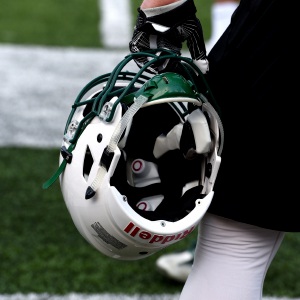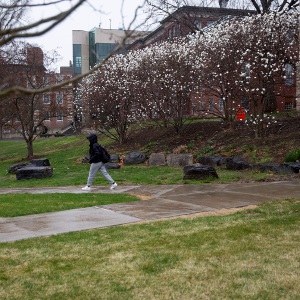Mobile home parks tackle septic, drinking water crises with federal dollars
| Published: 05-10-2023 12:09 PM |
When the North Country Village Cooperative asked the state last year for help with failing drinking water and wastewater systems, the manufactured home community was placed at No. 5 on a priority list.
Fifty-seven homes occupy the former 1960s three-season campground, just a few miles from the beautiful expanse of Lake Winnipesaukee in the small town of Tuftonboro. The leach field systems were defective and breaking down. Some needed to be pumped every six months or less. Septic tanks were undersized.
Drinking water was another issue altogether. The water system was just barely meeting daily demand, according to project documents, and one of the wells developed “persistent bacteria contamination” last year. Taking the well out of service only exacerbated the capacity issues.
Both the water and septic systems at North Country Village would require complete replacement before any road repairs could be considered – intimately connected infrastructure impacting residents’ quality of life. Any attempts to address the problems would cost huge amounts of money.
“We have quite a large elderly population, people on Social Security,” said Peter Billings, president of the cooperative’s board of directors. “Not many people that are still working.”
That’s where an unprecedented amount of federal infrastructure dollars has come in handy in recent years — in this case, empowering manufactured home communities to undertake essential projects to ensure the longevity of one of the only remaining affordable homeownership options in America.
There are 146 resident-owned communities with more than 8,800 affordable manufactured homes in New Hampshire. These neighborhoods are owned and operated as nonprofits by the residents who live in them, as opposed to outside landlords.
Privately funded and kept affordable through private means, there’s often very little money to address significant infrastructure needs – even though they might be critical for health, environment, and resident wallets in the long run.
Article continues after...
Yesterday's Most Read Articles
 Football helmet maker buys Lebanon’s Simbex
Football helmet maker buys Lebanon’s Simbex
 James Parker granted parole for his role in Dartmouth professors’ stabbing deaths
James Parker granted parole for his role in Dartmouth professors’ stabbing deaths
 Zantop daughter: ‘I wish James' family the best and hope that they are able to heal’
Zantop daughter: ‘I wish James' family the best and hope that they are able to heal’
 Kenyon: Dartmouth alumni join union-busting effort
Kenyon: Dartmouth alumni join union-busting effort
 Parker up for parole more than 2 decades after Dartmouth professor stabbing deaths
Parker up for parole more than 2 decades after Dartmouth professor stabbing deaths
 Through new school partnerships, CRREL seeks to educate young scientists
Through new school partnerships, CRREL seeks to educate young scientists
“The issues are not just issues of economic return or building more housing,” said Sarah Waring, USDA rural development state director for New Hampshire and Vermont. “They’re often public health and safety concerns, and environmental justice issues that need addressing.”
According to a 2020 report by Fannie Mae, the median household income of residents who own manufactured homes is approximately $35,000, and more than one-quarter earn less than $20,000.
Federal infrastructure investment enables these neighborhoods to build wealth and resilience, Waring said.
When residents like those at North Country Village assume ownership of their park and form a cooperative, they inherit the infrastructure – in whatever condition it was left by the previous owner. For some communities, those owners were diligent in maintaining water and sewer over the years.
But many neighborhoods suffer from failing systems due to deferred maintenance and aging. The new resident owners – most of whom are on fixed or low-to-moderate incomes – are suddenly faced with an expensive reality.
Sarah Marchant, chief of staff and vice president of ROC-NH, a program of the New Hampshire Community Loan Fund that helps residents of manufactured home parks buy the land under their houses, said these are “big problems that need comprehensive solutions.”
Manufactured home communities have been able to tap into other monies from Rural Development at the U.S. Department of Agriculture, Department of Housing and Urban Development, and most recently, President Joe Biden’s $1.2 trillion Bipartisan Infrastructure Law.
New Hampshire’s Department of Environmental Services also operates revolving state funds for wastewater and drinking water projects, and more than 20 resident-owned manufactured home cooperatives are receiving a share of $31.3 million from its “assistance for disadvantaged communities” program using American Rescue Plan Act dollars.
“This funding gives them the opportunity to level the playing field and start with a functioning system that meets their basic health, safety, and water quality needs,” Marchant said. “It can be really hard for these communities to be able to raise, say, an extra million to be able to do these improvements.”
North Country Village was able to secure federal funding from several avenues last year, and is currently undergoing a full overhaul of its drinking water and wastewater systems. That includes the drilling of a new bedrock well, and new leach fields, septic tanks, and lines.
The Lakes Region community couldn’t be more pleased. Billings said North Country Village has one of the lowest monthly lot rental rates in the state, and the funding assistance for major projects allows them to keep it that way.
“We feel as a board of directors we’re good for 20 to 30 years with proper upkeep,” Billings said. “We’re in such a financial position we can maintain the loans and contribute to an aggressive maintenance program for all of these things.”
Once the drinking water and wastewater work is complete, “then we’re going to get all new roads.”
Most manufactured home communities saw their water and septic systems installed sometime after the Clean Water Act of 1972. Because many of them were “creatively built,” as Marchant puts it, they usually have to be replaced entirely based on today’s standards.
The Colebrook Homeowners Cooperative, where water is leaking constantly, is among those receiving federal funding. Residents there are seeing extremely high bills “not based on consumption,” Marchant said. It’s also an environmental problem, and there’s increased potential for contamination.
Last summer, the state’s congressional delegation highlighted more than $2 million headed to the neighborhood of 47 lots that helps attract and house the local workforce.
A newly formed cooperative in Hollis is using $1 million in federal funds to address PFAS drinking water contamination discovered after the ownership transfer. A Raymond community is working to remediate “a lot of leakage, a lot of spillage” that has led to “basic health issues,” Marchant said.
Last month, USDA’s Waring spent a day at Woody Hollow Cooperative in Boscawen, where she said residents were “so joyful” over their recent improvements made possible by funding from the federal agency. The infrastructure was largely invisible and buried under the street, she said, but the impact was palpable.
Residents talked about having a barbecue and parade sometime this summer.

 Chelsea Green to be sold to international publishing behemoth
Chelsea Green to be sold to international publishing behemoth
